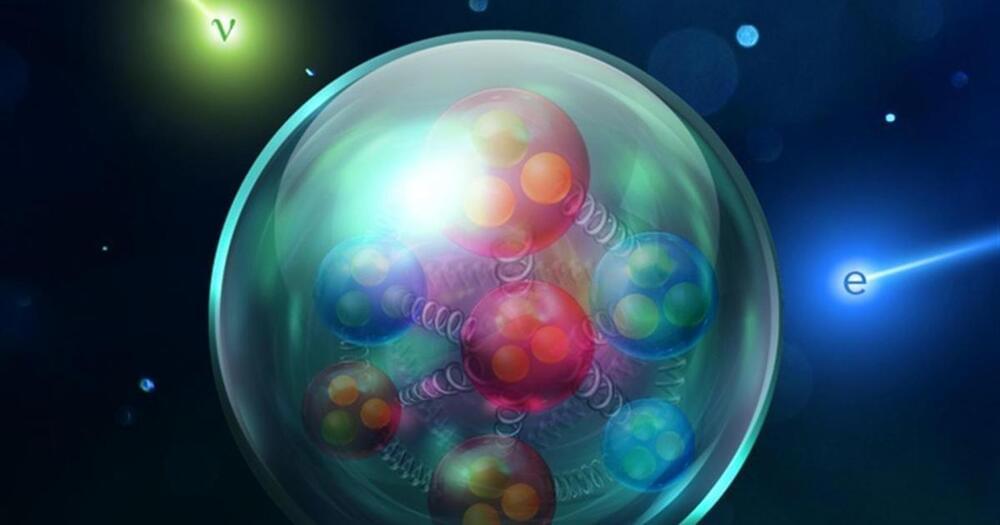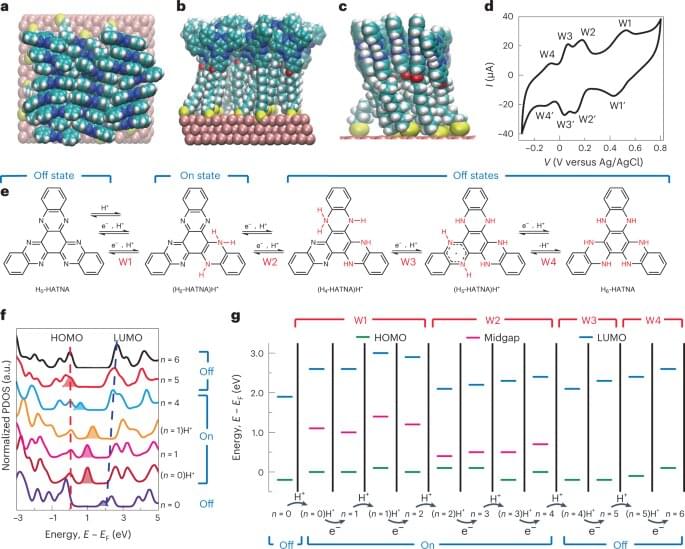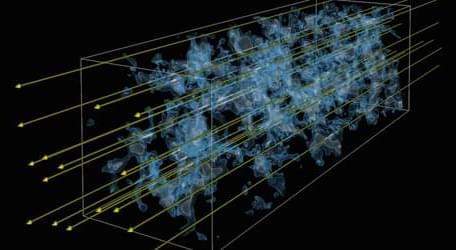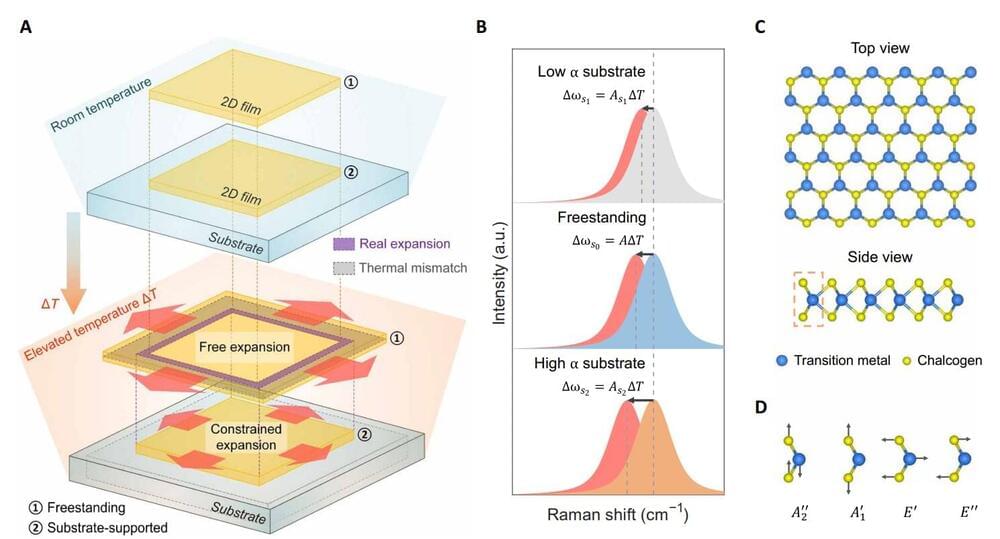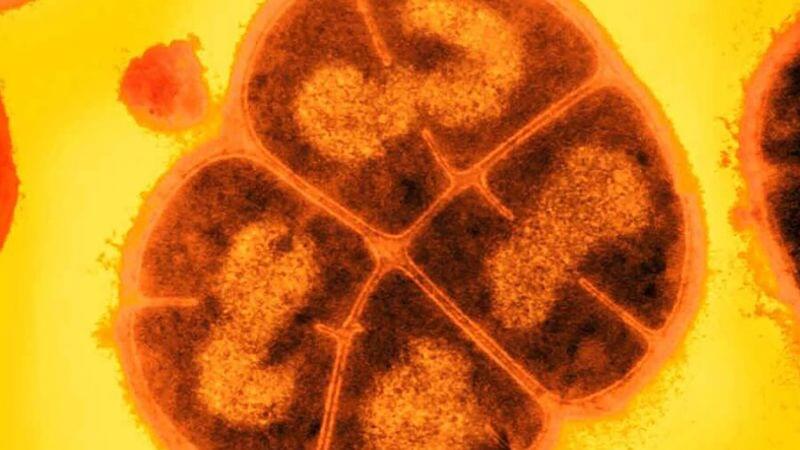Archive for the ‘particle physics’ category: Page 223
Nov 22, 2022
Einstein’s Predictions for Gravity Have Been Tested at the Largest Possible Scale
Posted by Paul Battista in categories: cosmology, particle physics, quantum physics
According to the Standard Model of Particle Physics, the Universe is governed by four fundamental forces: electromagnetism, the weak nuclear force, the strong nuclear force, and gravity. Whereas the first three are described by Quantum Mechanics, gravity is described by Einstein’s Theory of General Relativity. Surprisingly, gravity is the one that presents the biggest challenges to physicists. While the theory accurately describes how gravity works for planets, stars, galaxies, and clusters, it does not apply perfectly at all scales.
While General Relativity has been validated repeatedly over the past century (starting with the Eddington Eclipse Experiment in 1919), gaps still appear when scientists try to apply it at the quantum scale and to the Universe as a whole. According to a new study led by Simon Fraser University, an international team of researchers tested General Relativity on the largest of scales and concluded that it might need a tweak or two. This method could help scientists to resolve some of the biggest mysteries facing astrophysicists and cosmologists today.
The team included researchers from Simon Fraser, the Institute of Cosmology and Gravitation at the University of Portsmouth, the Center for Particle Cosmology at the University of Pennsylvania, the Osservatorio Astronomico di Roma, the UAM-CSIC Institute of Theoretical Physics, Leiden University’s Institute Lorentz, and the Chinese Academy of Sciences (CAS). Their results appeared in a paper titled “Imprints of cosmological tensions in reconstructed gravity,” recently published in Nature Astronomy.
Nov 22, 2022
Why we need quantum fields, not just quantum particles
Posted by Dan Breeden in categories: particle physics, quantum physics
Realizing that matter and energy are quantized is important, but quantum particles isn’t the full story; quantum fields are needed, too.
Nov 22, 2022
Novel nanowire fabrication technique paves way for next generation spintronics
Posted by Saúl Morales Rodriguéz in categories: chemistry, computing, nanotechnology, particle physics
9 nov 2022.
The challenge of fabricating nanowires directly on silicon substrates for the creation of the next generation of electronics has finally been solved by researchers from Tokyo Tech. Next-generation spintronics will lead to better memory storage mechanisms in computers, making them faster and more efficient.
As our world modernizes faster than ever before, there is an ever-growing need for better and faster electronics and computers. Spintronics is a new system which uses the spin of an electron, in addition to the charge state, to encode data, making the entire system faster and more efficient. Ferromagnetic nanowires with high coercivity (resistance to changes in magnetization) are required to realize the potential of spintronics. Especially L 10-ordered (a type of crystal structure) cobalt-platinum (CoPt) nanowires.
Conventional fabrication processes for L 10-ordered nanowires involve heat treatment to improve the physical and chemical properties of the material, a process called annealing on the crystal substrate; the transfer of a pattern onto the substrate through lithography; and finally the chemical removal of layers through a process called etching. Eliminating the etching process by directly fabricating nanowires onto the silicon substrate would lead to a marked improvement in the fabrication of spintronic devices. However, when directly fabricated nanowires are subjected to annealing, they tend to transform into droplets as a result of the internal stresses in the wire.
Nov 21, 2022
Nanorobots clean up contaminated water
Posted by Quinn Sena in categories: chemistry, particle physics, robotics/AI, sustainability
Chemists have created nanorobots propelled by magnets that remove pollutants from water. The invention could be scaled up to provide a sustainable and affordable way of cleaning up contaminated water in treatment plants.
Martin Pumera at the University of Chemistry and Technology, Prague, in the Czech Republic and his colleagues developed the nanorobots by using a temperature-sensitive polymer material and iron oxide. The polymer acts like tiny hands that can pick up and dispose of pollutants in the water, while the iron oxide makes the nanorobots magnetic. The researchers also added oxygen and hydrogen atoms to the iron oxide that can attach onto target pollutants.
The robots are about 200 nanometres wide and are powered by magnetic fields, which allow the team to control their movements.
Nov 21, 2022
Discovery reveals ‘brain-like computing’ at molecular level is possible
Posted by Genevieve Klien in categories: computing, neuroscience, particle physics
A discovery at University of Limerick in Ireland has revealed for the first time that unconventional brain-like computing at the tiniest scale of atoms and molecules is possible.
Researchers at University of Limerick’s Bernal Institute worked with an international team of scientists to create a new type of organic material that learns from its past behavior.
The discovery of the “dynamic molecular switch” that emulates synaptic behavior is revealed in a new study in the journal Nature Materials.
Nov 21, 2022
Dark Matter as an Intergalactic Heat Source
Posted by Saúl Morales Rodriguéz in categories: cosmology, particle physics
Spectra from quasars suggest that intergalactic gas may have been heated by a form of dark matter called dark photons.
Dense gas clouds across the Universe absorb light from distant quasars, producing absorption lines in the quasar spectra. A new study shows that the larger-than-predicted widths of these lines from nearby gas clouds could result from a form of dark matter called dark photons [1]. These particles could heat the clouds, leading to a widening of the absorption lines. Other explanations of the broadening—based on more conventional heating sources—have been proposed, but if the dark-photon mechanism is at work, it might also cause heating in low-density clouds from earlier epochs of the Universe. Researchers are already planning to test this prediction.
When viewing the spectrum of a distant quasar, astronomers often observe absorption lines coming from the intervening clouds of gas. The most prominent absorption line is the Lyman-alpha line of hydrogen. Indeed, some quasar spectra have a “forest” of Lyman-alpha lines, with each coming from a cloud at a different distance from our Galaxy (or different epochs). By examining the widths, depths, and other details of the line shapes, researchers can extract information about the density, the temperature, and other features of the clouds. This information can be compared with the results of cosmological simulations that try to reproduce the clumping of matter into galaxies and other large-scale structures.
Nov 21, 2022
New technique accurately measures how 2D materials expand when heated
Posted by Saúl Morales Rodriguéz in categories: computing, particle physics, solar power, sustainability
Two-dimensional materials, which consist of just a single layer of atoms, can be packed together more densely than conventional materials, so they could be used to make transistors, solar cells, LEDs, and other devices that run faster and perform better.
One issue holding back these next-generation electronics is the heat they generate when in use. Conventional electronics typically reach about 80 degrees Celsius, but the materials in 2D devices are packed so densely in such a small area that the devices can become twice as hot. This temperature increase can damage the device.
This problem is compounded by the fact that scientists don’t have a good understanding of how 2D materials expand when temperatures rise. Because the materials are so thin and optically transparent, their thermal expansion coefficient (TEC)—the tendency for the material to expand when temperatures increase—is nearly impossible to measure using standard approaches.
Nov 21, 2022
An Antarctic Neutrino Telescope Has Detected a Signal From the Heart of a Nearby Active Galaxy
Posted by Quinn Sena in category: particle physics

O.o!!!
How to Spot a Neutrino
Nov 20, 2022
Microbes may have survived for millions of years beneath the Martian surface
Posted by Dan Breeden in categories: biological, particle physics, space
Ancient bacteria might be sleeping beneath the surface of Mars, where it has been shielded from the harsh radiation of space for millions of years, according to new research.
While no evidence of life has been found on the red planet, researchers simulated conditions on Mars in a lab to see how bacteria and fungi could survive. The scientists were surprised to discover that bacteria could likely survive for 280 million years if it was buried and protected from the ionizing radiation and solar particles that bombard the Martian surface.
The findings suggested that if life ever existed on Mars, the dormant evidence of it might still be located in the planet’s subsurface — a place that future missions could explore as they drill into Martian soil.


